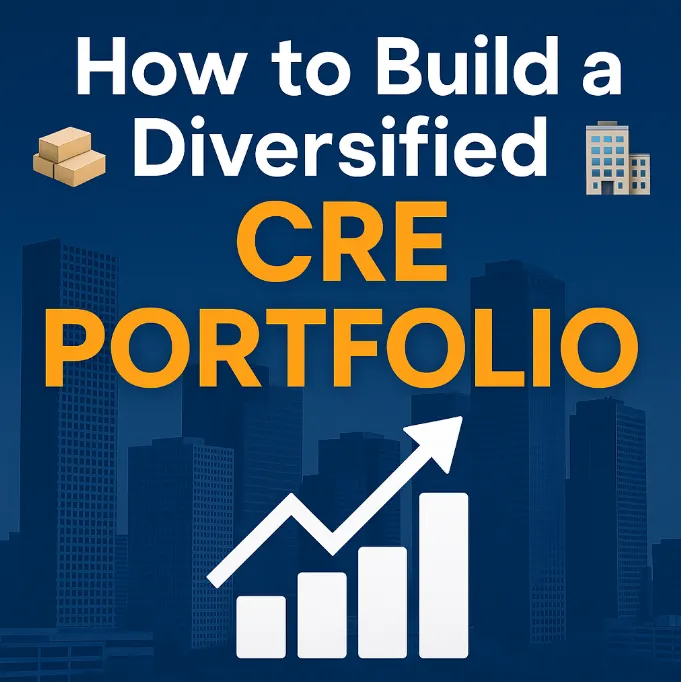
🧱 How to Build a Diversified CRE Portfolio 🏢 | Smart Investing Tips for 2025
🧱 How to Build a Diversified CRE Portfolio 🏢 | Smart Investing Tips for 2025
📊 CRE Portfolio Diversification Strategy 🏗️ | Protect & Grow Your Investments
🧱 How to Build a Diversified CRE Portfolio
In commercial real estate (CRE), diversification isn't just a buzzword—it’s a risk management strategy that builds resilience and unlocks long-term growth. Whether you're a seasoned investor or just starting out, constructing a diversified CRE portfolio can help you weather market shifts and capitalize on emerging trends.
Why Diversification Matters in CRE
Commercial real estate markets can be volatile. Economic downturns, interest rate hikes, and sector-specific disruptions (like remote work affecting office buildings) can wipe out returns if you’re overexposed to a single asset class.
A diversified portfolio spreads risk across multiple:
· Asset types (e.g., retail, industrial, multifamily, office, medical)
· Geographies (local, regional, out-of-state)
· Tenant mixes (credit tenants vs. mom-and-pop)
· Hold durations (core, value-add, opportunistic)
By diversifying strategically, you protect your downside while enhancing your upside.
Step-by-Step Guide to CRE Portfolio Diversification
1. Define Your Investment Goals
· Are you looking for cash flow, appreciation, tax advantages, or a blend?
· Your strategy (e.g., long-term passive income vs. short-term flips) determines how diversified you should be.
2. Mix Asset Classes Wisely
· Retail: Stable leases, especially in high-traffic corridors.
· Industrial: Exploding demand from e-commerce and logistics.
· Multifamily: Reliable cash flow with strong occupancy trends.
· Medical Office: Recession-resistant tenants with long-term leases.
· Land/Development: Higher risk, but potential for big returns.
3. Consider Geographic Spread
· Avoid putting all your capital into one metro area.
· Mix primary markets (like Houston or Dallas) with secondary/tertiary markets (like Katy or Fulshear) for growth potential and less competition.
4. Blend Passive and Active Investments
· Buy-and-hold deals, triple-net leases, syndications, and REITs offer passive options.
· Value-add or ground-up developments offer higher risk/reward for more hands-on investors.
5. Evaluate Tenant Risk and Lease Structure
· Triple-net (NNN) leases shift expenses to tenants and offer predictable returns.
· Multi-tenant centers diversify your rental income streams.
6. Rebalance Annually
· As the market evolves, your portfolio needs to adapt. Consider rebalancing based on performance, market conditions, and your changing goals.
Pro Tip: Work with a CRE Broker & Lender Combo
A team that understands both the brokerage and financing side (like Viking Enterprise Team + Medallion Mortgage) helps you evaluate opportunities holistically—whether you’re buying a medical office in Katy or refinancing a retail strip in San Angelo.
x
https://www.houstonrealestatebrokerage.com/
https://www.houstonrealestatebrokerage.com/houston-cre-navigator
https://www.commercialexchange.com/agent/653bf5593e3a3e1dcec275a6
http://expressoffers.com/[email protected]
https://app.bullpenre.com/profile/1742476177701x437444415125976000
https://author.billrapponline.com/
https://www.amazon.com/dp/B0F32Z5BH2
© 2023-2024 Bill Rapp, Broker Associate, eXp Commercial Viking Enterprise Team
